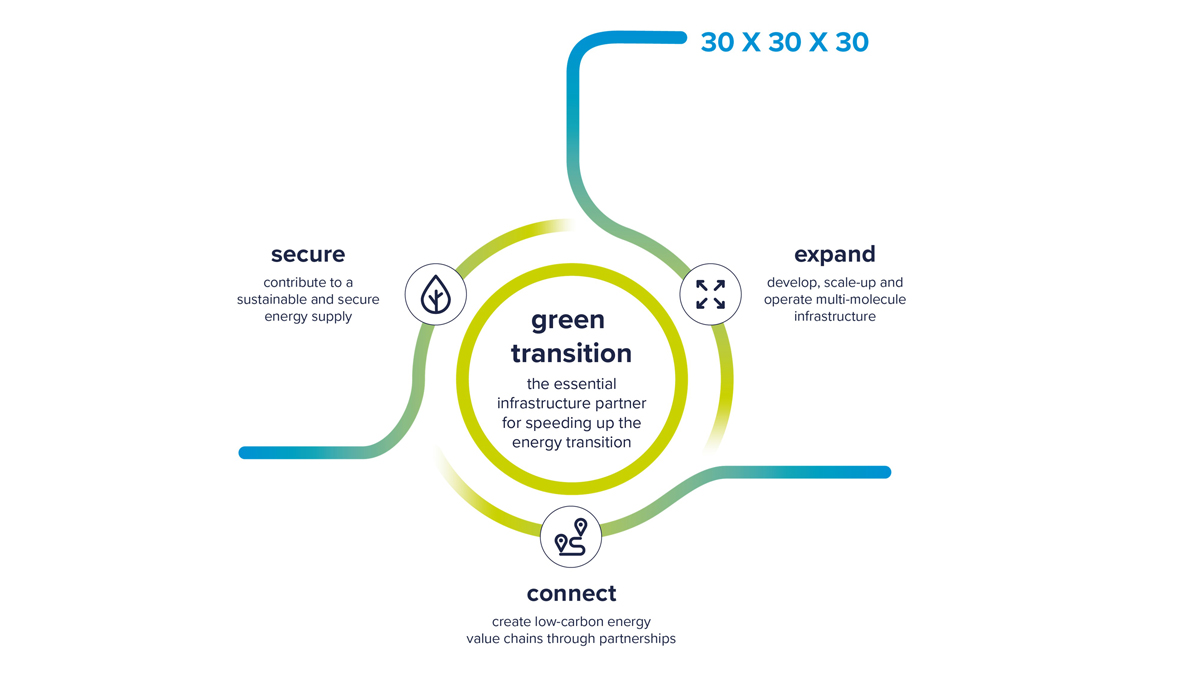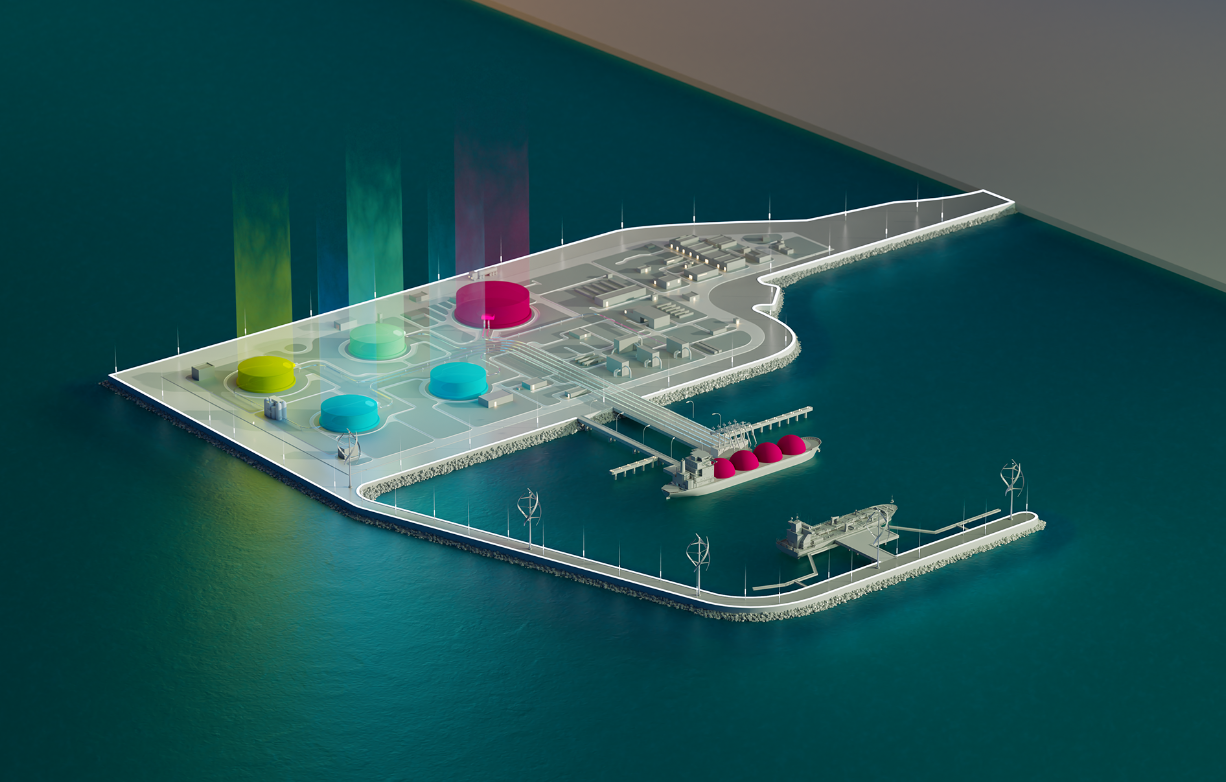How will Fluxys help companies transition to hydrogen?
Many industries are looking at the potential of hydrogen to reduce their emissions. To make these developments possible, we at Fluxys are working hard to future-proof our network of pipelines.
Our ambition can be expressed in three numbers: 30x30x30
By 2030, we want to offer enough capacity to transport 30 TWh of hydrogen, an amount of energy that represents more than one third of total electricity consumption in Belgium.
By 2030, we also want to offer enough capacity to transport 30 million tonnes of CO2 annually, the equivalent of removing 13 million cars from the road every year. By way of comparison, there are 5.9 million passenger cars on the road in Belgium.
Infrastructure for energy transport: a genuine underground movement
As an international energy infrastructure group, Fluxys is building the backbone of the hydrogen economy. We are engaging with industry to adapt our existing infrastructure where necessary and to build new pipelines at the pace of the market. To enable and accelerate companies’ energy transition, we aim to develop hydrogen pipelines for and between industry in Flanders, Wallonia and throughout Europe.
In Belgium, we are transforming our highly meshed natural gas network into a multi-molecule grid that includes hydrogen. This evolution positions Belgium as a key import and transit country for hydrogen in Europe. We are developing hydrogen pipelines across Flanders and Wallonia to connect industrial clusters and support decarbonisation. Our terminal in Zeebrugge, along with future terminals in Ghent and Antwerp, will serve as entry points for hydrogen, reinforcing Belgium’s role as a strategic gateway for clean energy molecules.
Our Belgian network is designed to seamlessly integrate with the emerging European hydrogen backbone. We are actively involved in cross-border infrastructure initiatives, including interconnections with Germany, the Netherlands, and France. This continental infrastructure will enable hydrogen transport across borders and connecting global hydrogen supply routes with European demand.
Together with our affiliates, partners and industry, we are shaping a connected European energy system.
Our terminals as European game-changers
Zeebrugge, one of the most important LNG ports in Europe, will be modified so that the terminal is ready to handle hydrogen and derivatives such as ammonia and methanol. It will reshape the Zeebrugge LNG terminal into a multi-directional and multi-molecule hub for large-scale decarbonisation. But that’s not all.
Beyond Zeebrugge, Fluxys is developing a new ammonia import terminal in Antwerp, in partnership with Advario. This open-access facility will deliver green and low-carbon ammonia. In Europe, Fluxys is contributing to hydrogen infrastructure projects, especially in Germany, where the industry is actively looking to become climate neutral.
To ensure a reliable and affordable energy system, hydrogen will have to be imported from regions with abundant renewable energy. Our international partnerships position Fluxys as an enabler of the hydrogen economy, helping Europe access clean energy from around the world.

